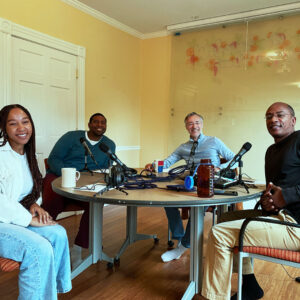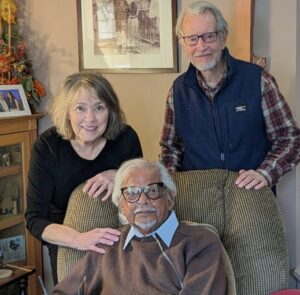SEARCHING FOR THE HOLY GRAIL OF CIRCLES
It’s one thing to believe that talking circles in schools is a good idea, and another to really experience the power of it.
You’ve probably heard people share glowing tales of circle magic in the classrooms where a gaggle of troublesome students transform into that holy grail of a community of learners.
You might then also be in the camp of teachers who’ve subsequently tried said circle concept in your own classroom. Perchance you lovingly created a circular arrangement of your desks, identified a whimsical talking piece to pass around, and scrutinized over the perfect wording of a circle question that will engage and connect everyone into a family.
….then at 3:30 you find yourself searching for the broken pieces of the talking piece and rearranging your desks in to clean straight rows to try to bring some semblance of order back.
I don’t think I’m alone in this experience.
As an educator interested in restorative practices I’ve been on this rollercoaster for years- balancing my own personal needs for connection with order. I want to respect and know my students, but I also have a desire to successfully facilitate learning.
In my messy experimenting I’ve made lots of mistakes (a.k.a. obnoxious opportunities for growth) and had a couple of meaningful experiences in my classroom that lets me know I’m on the right track. And it seems to me that track is shaped in a circle.
ROUND AND A ROUND WE GO
I started off the year very attached to my vision of what a circle should look like: one voice at a time, strict talking piece protocol, silent active listening. Then I watched my classes as loud side conversations drowned out meek responses or apathetic silence prevailed as bored students shuffled the talking piece along without a peep. This was not their circle- it was mine and they really wanted nothing to do with it.
I want to be clear that all those elements of a circle I mentioned are really wonderful. But every space and community is different and I don’t believe one size fits all. After taking a break from circle work, I decided to recommit to doing daily circles with the goal of truly sharing ownership with my students.
This leads me to my new most favorite classroom toy. If I was stranded on a desert island with my students, I would take this toy over my white board, my smart board, my laptop even. I keep it safely in a sheet protector and pulled it out at the beginning of each class: my list of 42 circle questions.
“Who wants to pick today’s question?”
At first one or two were interested in perusing the list. Now it’s the entire class begging to see it, jockeying for the coveted position of question selector.
These are not questions about my learning target. They are questions that solicit storytelling. Incredible story telling that more often than not I can connect to something we’re studying later on. Because when students get to tell stories they want to tell, there is always something meaningful to explore.
The “problem” student that never works shares about the crazy dare to jump off his roof into a pool. For those few minutes the room is in the palm of his hand as he describes his fateful leap (he misses!)…then he passes the opportunity to share to the next kid. Everyone gets to be heard….though we don’t need the talking piece.
There are disruptions no doubt, but students want to share and they want to listen. And as students get invested in the circle they are learning that “SHUT THE HELL UP” isn’t nearly as effective as “Hey guys, not trying to be disrespectful but like…could you listen?” Screaming laced with profanity is morphing to respectful requests.
The stories aren’t always wild adventures. In one class there’s a kid who frequently gets bullied when he speaks. During one circle he shared out about how his father left his family when he was five. The room fell solemnly silent. Suddenly across the room another girl shared that her father left too and that she knew how hard it was. That would have been simply a caring connection, but it was actually astounding. This was the first time I had heard the girl say anything remotely kind to the other student all year. Somehow empathy is growing in seemingly impossible relationships.
I still have students who pass on sharing, but I know they listen eagerly. I have students laughing at inappropriate times, but we talk about how that can impact others. And circles are still messy, but I commit to setting up a circle everyday. Because for the first time in my four years of teaching I can feel that every single one of my students feel respected by me and I feel respected by them – and we’re all listen to each other.
Click here for a full list of possible circle questions.
By Dana Lundquist




